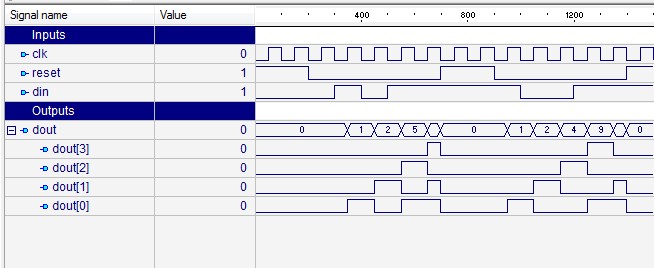8 Bit Serial To Parallel Converter Verilog Code
Development duties were shared between many of Rockstar's studios worldwide. As part of their research for the open world, the developers conducted field research around California throughout development and captured footage for the design team. The development team envisioned Grand Theft Auto V as a spiritual successor to many of their previous projects, such as Red Dead Redemption and Max Payne 3. Gta san andreas key code. The game's use of three lead protagonists is a break from series tradition—a design choice from the developers to innovate on the core structure of its predecessors.
A serial-in, parallel-out shift register is similar to the in that it shifts data into internal storage elements and shifts data out at the serial-out, data-out, pin. It is different in that it makes all the internal stages available as outputs. Therefore, a serial-in, parallel-out shift register converts data from serial format to parallel format. An Example of Using Serial-in, Parallel-out Shift Register If four data bits are shifted in by four clock pulses via a single wire at data-in, below, the data becomes available simultaneously on the four Outputs Q A to Q D after the fourth clock pulse. The practical application of the serial-in, parallel-out shift register is to convert data from serial format on a single wire to parallel format on multiple wires. Let’sl illuminate four LEDs (light emitting diodes) with the four outputs ( Q A Q B Q C Q D).

The above details of the serial-in, parallel-out shift register are fairly simple. It looks like a serial-in, serial-out shift register with taps added to each stage output.
Jan 16, 2018 - Question: Serial to verilog parallel code converter [UPDATED] When I examined the code for the Here is the. 8 Bit Serial To Parallel Converter.
Serial data shifts in at SI (Serial Input). After a number of clocks equal to the number of stages, the first data bit in appears at SO (Q D) in the above figure. In general, there is no SO pin. The last stage (Q D above) serves as SO and is cascaded to the next package if it exists. Serial-in, Parallel-out vs.
Serial-in, Serial-out Shift Register If a serial-in, parallel-out shift register is so similar to a serial-in, serial-out shift register, why do manufacturers bother to offer both types? Why not just offer the serial-in, parallel-out shift register? The answer is that they actually only offer the serial-in, parallel-out shift register, as long as it has no more than 8-bits. Note that serial-in, serial-out shift registers come in bigger than 8-bit lengths of 18 to 64-bits. It is not practical to offer a 64-bit serial-in, parallel-out shift register requiring that many output pins. See waveforms below for above shift register. The shift register has been cleared prior to any data by CLR’, an active low signal, which clears all type D Flip-Flops within the shift register.
Note the serial data 1011 pattern presented at the SI input. This data is synchronized with the clock CLK. This would be the case if it is being shifted in from something like another shift register, for example, a parallel-in, serial-out shift register (not shown here). On the first clock at t1, the data 1 at SI is shifted from D to Q of the first shift register stage.
After t2 this first data bit is at Q B. After t3 it is at Q C. After t4 it is at Q D. Four clock pulses have shifted the first data bit all the way to the last stage Q D.
The second data bit a 0 is at Q C after the 4th clock. The third data bit a 1 is at Q B.
The fourth data bit another 1 is at Q A. Thus, the serial data input pattern 1011 is contained in ( Q D Q C Q B Q A). It is now available on the four outputs. It will available on the four outputs from just after clock t 4 to just before t 5. This parallel data must be used or stored between these two times, or it will be lost due to shifting out the Q D stage on following clocks t 5 to t 8 as shown above. Serial-in, Parallel-out Devices Let’s take a closer look at serial-in, parallel-out shift registers available as integrated circuits, courtesy of Texas Instruments. For complete device data sheets, follow the links.

• SN74ALS164A serial-in/ parallel-out 8-bit shift register • SN74AHC594 serial-in/ parallel-out 8-bit shift register with output register • SN74AHC595 serial-in/ parallel-out 8-bit shift register with output register • CD4094 serial-in/ parallel-out 8-bit shift register with output register The 74ALS164A is almost identical to our prior diagram with the exception of the two serial inputs A and B. The unused input should be pulled high to enable the other input. We do not show all the stages above. However, all the outputs are shown on the ANSI symbol below, along with the pin numbers. The CLK input to the control section of the above ANSI symbol has two internal functions C1, control of anything with a prefix of 1. This would be clocking in of data at 1D. The second function, the arrow after the slash (/) is right (down) shifting of data within the shift register.